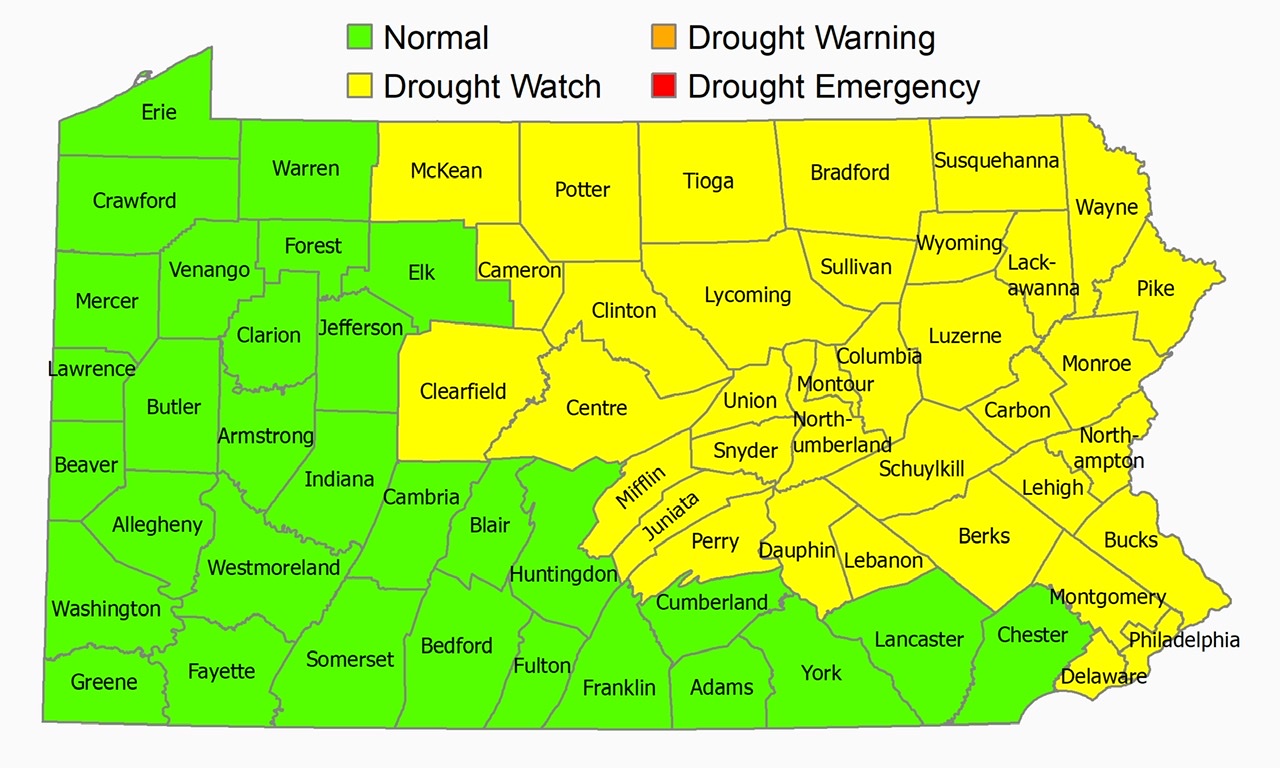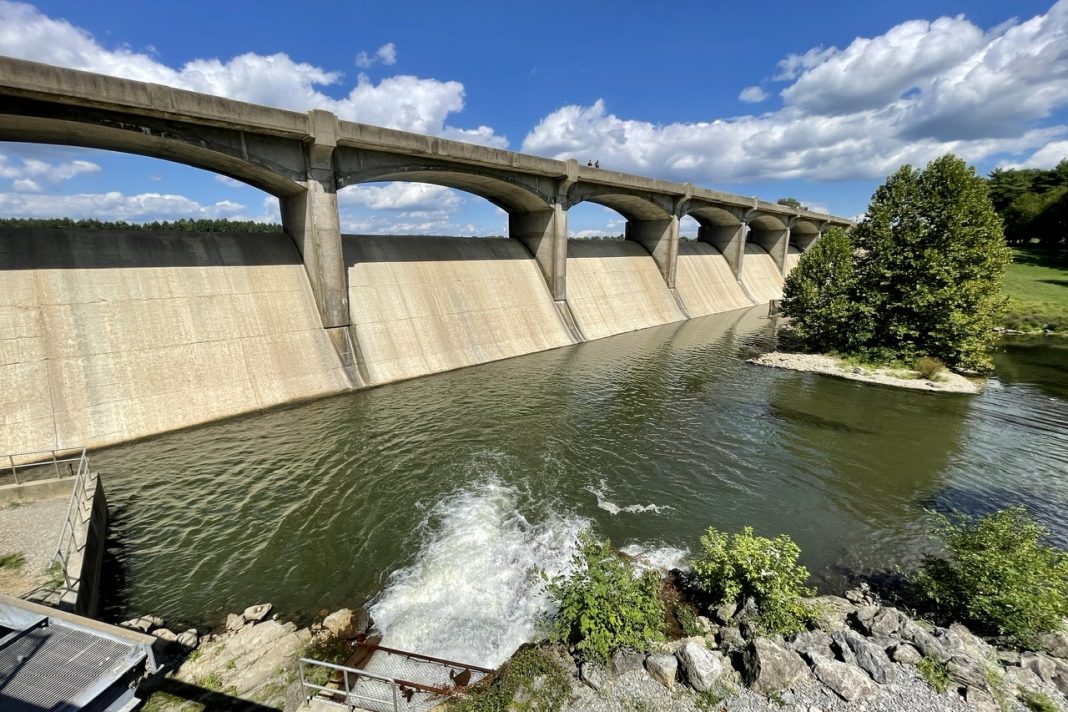The Pennsylvania Department of Environmental Protection announced Wednesday the the Commonwealth Drought Task Force has declared a drought watch for 36 counties and asks for voluntary water conservation in those counties.
“A few counties have experienced very dry conditions over the summer, and a number of others have inched into increasingly dry conditions in recent weeks. We’re asking Pennsylvanians in all of these counties to use water wisely and follow simple water conservation tips to ease the demand for water,” said DEP Acting Secretary Ramez Ziadeh.
The following counties are on drought watch: Berks, Bucks, Bradford, Cameron, Carbon, Centre, Clearfield, Clinton, Columbia, Dauphin, Delaware, Juniata, Lackawanna, Lebanon, Lehigh, Luzerne, Lycoming, McKean, Mifflin, Monroe, Montgomery, Montour, Northampton, Northumberland, Perry, Philadelphia, Pike, Potter, Schuylkill, Snyder, Sullivan, Susquehanna, Tioga, Union, Wayne, and Wyoming.

Residents on drought watch are asked to reduce their individual water use by 5 to 10%, or a reduction of three to six gallons of water per day.
DEP is notifying all water suppliers in these counties of the need to monitor their supplies and be prepared by updating their drought contingency plans as necessary. Varying localized conditions may lead water suppliers or municipalities to ask residents for more stringent conservation actions.
At this time, two public water suppliers are requiring residents to reduce their water use: Galeton Borough Water Authority in Potter County and Waterville Water Association in Lycoming County.
Six suppliers are asking residents to voluntarily reduce their water use: BCI Municipal Authority, Clearfield County, Driftwood Boro, Cameron County, Jersey Shore Area Joint Water Authority, Lycoming County, Lock Haven, Clinton County, Palmerton Municipal Water Authority, Carbon County, and Pennsylvania American Water Company – Bangor District, Carbon County.
Ways to Conserve Water at Home
There are many ways to conserve water at home, including: Run water only when necessary. Don’t let the faucet run while brushing your teeth or shaving. Shorten the time you let the water run to warm up before showering. Run the dishwasher and washing machine less often, and only with full loads. Water your garden in the cooler evening or morning hours, and direct the water to the ground at the base of the plant, so you don’t waste water through evaporation.
Water your lawn only if necessary. Apply no more than 1 inch of water per week (use an empty can to determine how long it takes to water 1 inch). Avoid watering on windy and hot days. This pattern will encourage healthier, deeper grass roots. Over-watering is wasteful, encourages fungal growth and disease, and results in shallow, compacted root systems that are more susceptible to drought. When mowing your lawn, set the blades to 2-3 inches high. Longer grass shades the soil, improving moisture retention. It also grows thicker and develops a deeper root system, so it can better survive drought.
Check for and repair household leaks. For example, a leaking toilet can waste up to 200 gallons of water daily. Sweep your sidewalk, deck, or driveway instead of hosing it off. Replace older appliances with high-efficiency, front-loading models that use about 30 percent less water and 40-50 percent less energy. Install low-flow plumbing fixtures and aerators on faucets. Set up a rain barrel to be ready to repurpose rain when it does fall. For information, see this Penn State Extension guide.
How DEP Determines Drought Conditions
To determine drought conditions, DEP assesses information on public water supply levels and data on four indicators: precipitation, surface water (stream and river) flow, groundwater level, and soil moisture. Declarations aren’t based on one indicator alone, such as precipitation.
The DEP Drought Coordinator monitors the indicators in close partnership with the U.S. Geological Survey, which maintains gauges in streams and wells in many locations across Pennsylvania.
There are normal ranges for all four indicators. DEP makes drought status recommendations after assessing departures from these ranges for all indicators for periods of 3-12 months. For a map that’s updated daily to show the status of all four indicators for each county, see the USGS Pennsylvania drought condition monitoring website.
DEP shares these data and its recommendations with the state and federal agencies and other organizations that make up the Commonwealth Drought Task Force. Drought watch and warning declarations are determined by DEP, with the concurrence of the task force.
Drought emergency declarations follow the same process, with final approval by the governor. No county is in drought warning or emergency status at this time.
For more information on how DEP monitors conditions and makes drought status declarations, see the drought management fact sheet.
The next Commonwealth Drought Task Force meeting will be on Tuesday, September 13, 2022, at 1:00 PM.


